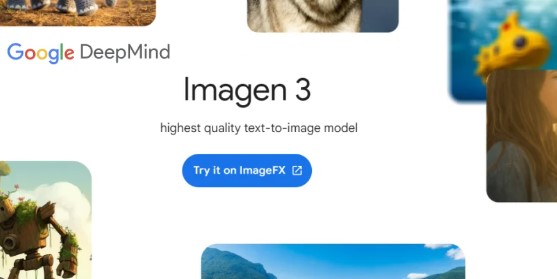Google has discreetly launched its latest artificial intelligence (AI) model for image generation, Imagen 3, offering users in the United States access to the new tool. The release was made without any formal announcement, as the tech giant introduced the model directly to users. Alongside the model’s release, Google also published a research paper detailing its technology in an online journal. For now, Imagen 3 is exclusively available in the US, with no indication of when it will be accessible to users in other regions.
Imagen 3 AI Model Now Available on Google’s AI Test Kitchen
Google’s AI Test Kitchen is now open for user sign-ups, allowing participants to experiment with the third iteration of the Imagen model. Imagen 3 brings significant improvements, including better texture generation, enhanced word recognition, and more precise adherence to user prompts.
While the model remains limited to the US, preventing international outlets like Gadgets 360 from testing it, some early users have shared their experiences online. A Reddit user reported successfully generating images in various styles, including those mimicking Nikon DSLR quality, GoPro perspectives, and wide-angle lenses. However, the user noted that Imagen 3 struggles with certain scenarios, such as generating close-up images with multiple people or dealing with low-light conditions—tasks its predecessor handled more adeptly.
Challenges and Limitations
Despite its advancements, Imagen 3 still faces challenges, particularly with rendering limbs. Users have reported issues where the AI generates extra limbs or merges objects awkwardly when given prompts like “a guy holding a cup of coffee.” Additionally, the model appears to have strict content moderation, which may limit the range of prompts users can effectively utilize.
Research and Development Insights
In conjunction with the model’s release, Google published a research paper on the pre-print platform arXiv, shedding light on the underlying technology of Imagen 3. The paper explains that the model employs a latent diffusion approach—a variant of the diffusion model that gained prominence through tools like Stable Diffusion. Google also emphasized that it has implemented new methodologies aimed at reducing potential harm when using Imagen 3, indicating a focus on ethical AI development.
Comparison with Gemini Chatbot’s Image Capabilities
It’s important to note that Google’s Gemini chatbot, available in its free tier, can also generate images. However, Gemini’s image generation capabilities are rooted in a different architecture. Imagen 3, with its extensive image-based dataset, is specifically optimized for AI image creation, providing a more refined and accurate output compared to Gemini’s broader but less specialized capabilities.
As Google continues to refine its AI technologies, the release of Imagen 3 marks another step forward in the rapidly evolving field of AI-driven content creation. While currently restricted to a limited audience, the advancements in Imagen 3 suggest that it could become a powerful tool for artists, designers, and creators as it becomes more widely available.


